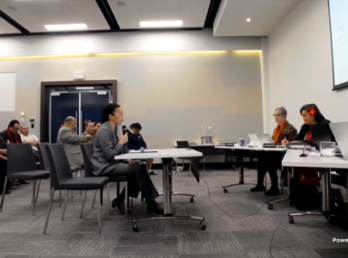COVID-19: Alert Level 3 Changes in H & S articles
Date
29 Apr 2020
Related Expertise
COVID-19: Alert Level 3 – Changes in Health and Safety Requirements
The New Zealand Government announced the transition to Alert Level 3, on 27 April.
While a number of changes will take place following this transition, one of the most significant changes is that businesses, which can operate ‘safely’ will be allowed to re-open, if remote working isn’t possible.
Below, we will take a quick look at some of the key information that businesses and individuals need to be aware of, in order to ensure their compliance with the Health and Safety Work Act.
If you have any questions about what these changes and regulations mean for you, our experienced team will be more than happy to provide you with further guidance.
Safety Plan
Under Alert Level 3, all business returning to operation, will need to have a COVID-19 safety plan. Businesses that were operating as an essential service under Alert Level 4 are excluded from this requirement, although they too, must maintain the same tight health and safety controls as what they had before.
The safety plan must address how the business will manage and minimise COVID-19 related risk in the workplace. For example, businesses might seek to minimise risk by implementing new physical segregation measures, updated shift patterns, scheduled meal break times or staggered start and finish times. The safety plan must also be discussed and shared with everyone at work (including contractors and supplies), before work can resume.
Best practice would dictate that there should be a person or a team of people that would be responsible for enforcing the safety plan controls and regulations, with a focus on managing exposure of employees to COVID-19. This would mean that, should there be an exposure to COVID-19, the organisation could work efficiently with the government to contact trace and minimise the spread of the virus.
You can find more information on the safety plan here.
Employer Obligations
Employers should also continue to be mindful of their obligations, generally, under the Health and Safety at Work Act to take all “reasonably practicable steps” to mitigate any risks in a workplace that could cause harm to an employee or anyone else (such as members of the public or customers). This includes:
- Understanding and keeping up to date with guidance released by the Government;
- Ensuring all controls and measures in place are regularly assessed and updated as appropriate;
- Enforcing strict policies whereby anyone exhibiting symptoms or who is at risk for contracting the virus, is managed correctly to the individual’s circumstances;
- Allocating sufficient resources to allow for compliance with the healthy and safety rules.
On a more practical level, an employer needs to seriously look into:
- Physical distancing to an extent that is possible. For example, workers may need to be isolated so as to undertake work alone.
- Ensuring all workers are up-to-date with what the symptoms of COVID-19 are and that they are encouraged to be self-evaluating of their health and potential exposures.
- Health and safety regulations, hygiene protocols and safety plans are made available to all workers in an easy to understand and accessible way.
Privacy Considerations
While there are requirements for keeping your employee’s information private under the Privacy Act 1993, the Act does also allow for extraordinary situations.
An employee having an infectious disease is one such exception, as it threatens the health of other individuals. If you have an employee who you become aware has COVID-19 then you may make it known to people who could be at threat of catching it from that employee from having been in contact with them during that period. This can include other staff as well as people outside your firm. Similarly, if you become aware from a customer or business contact that they are infected, you should bring this to the attention of staff who may have been in contact with them.
However, you should limit the notification to just those whose health may be threatened. This would ordinarily breach the employee’s privacy, but is most likely permitted under Information Privacy Principle 10 of the Privacy Act 1993.
THIS OUTLINE CANNOT BE TAKEN AS LEGAL ADVICE AS SUCH AND YOU SHOULD CONSULT YOUR OWN LEGAL ADVISOR OR US FOR LEGAL ADVICE ON YOUR PARTICULAR CIRCUMSTANCES.
Subscribe
Get insights sent direct to your email.




















